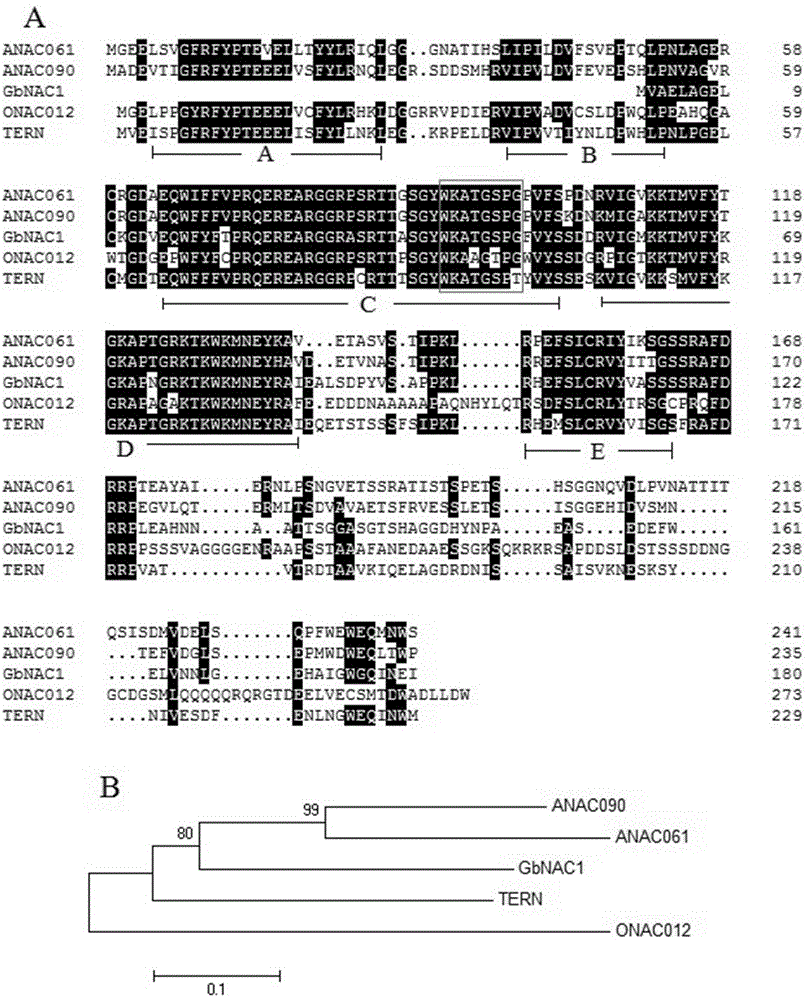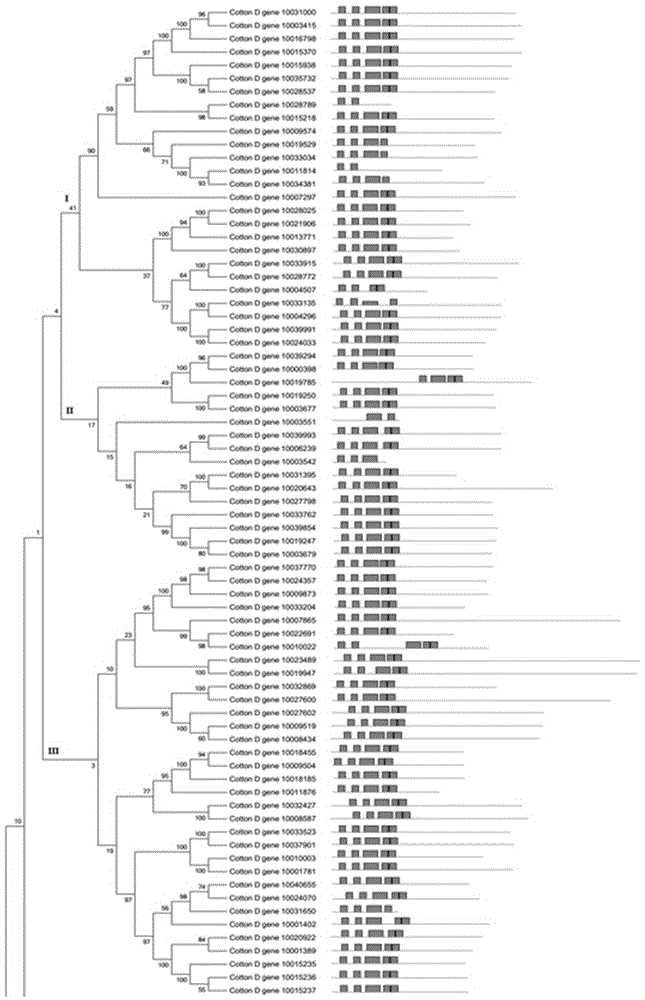Application of sea island cotton GbNAC1 in verticillium wilt resistance
An anti-Verticillium wilt and Verticillium wilt technology, applied in the field of genetic engineering, can solve problems such as lack of preventive measures
- Summary
- Abstract
- Description
- Claims
- Application Information
AI Technical Summary
Problems solved by technology
Method used
Image
Examples
Embodiment 1
[0044] sea island cotton transcription factor GbNAC1 It is the basis of the present invention, so the cloning and obtaining process of the gene will be briefly introduced as follows.
[0045] 1. Electronic cloning
[0046] First, according to the previous transcriptome sequencing in our laboratory, a 1159bp gene fragment (unigene25035_kv-1) annotated as a member of the NAC family was screened, and electronic cloning was performed on the basis of it to obtain a sequence.
[0047] 2. Design primers for PCR amplification
[0048] First, extract RNA and reverse transcribe to obtain cDNA, specifically:
[0049] After the cotton grows cotyledons, extract cotton RNA (use liquid nitrogen grinding method to extract RNA, refer to the instructions of EASYspinPlus Plant RNA Rapid Extraction Kit for specific steps), and reverse transcribe it into cDNA;
[0050] The cDNA template preparation system is specifically designed as follows:
[0051] oligo(dT), 2 μL;
[0052] RNA, 3 μL;
...
Embodiment 2
[0084] for further understanding GbNAC1 The related characteristics of genes, the inventors use specific carrier pairs GbNAC1 Subcellular localization of genes in cells, and the use of GUS gene markers for GbNAC1 The expression of genes in plant tissues was analyzed, and the relevant experimental procedures are briefly described as follows.
[0085] Subcellular localization of GbNAC1 gene in cells
[0086] Using Gateway technology to GbNAC1 The gene was recombined into the subcellular localization vector pK7FWG2.0, and then transformed into Nicotiana benthamiana ( Nicotiana benthamiana ), observed by confocal laser microscopy GbNAC1 The localization and expression of genes in cells. The specific experimental process is:
[0087] Firstly, the primer sequences were designed, and the genomic gDNA extracted from the leaves of cotton Xinhai 16 was used as a template to carry out GbNAC1 Amplification of the sequence, electrophoresis and recovery of the amplified product, the...
Embodiment 3
[0118] This example mainly introduces GbNAC1 The distribution of genes in cotton tissue and the changes of gene expression induced by Verticillium dahliae, the relevant experimental process is briefly described as follows.
[0119] Distribution of GbNAC1 Gene in Cotton Tissues
[0120] for the sake of GbNAC1 The function of the gene has a preliminary understanding, so it is necessary to GbNAC1 The distribution of genes in different tissues has a preliminary understanding, and the relevant experimental processes are mainly:
[0121] After the sea island cotton Xinhai 15 seeds were sown, when two true leaves grew out, the roots, stems, true leaves, cotyledons, and shoot tips were sampled (preserved at -80°C before sample processing), and the RNA was extracted by liquid nitrogen grinding method , and reverse-transcribed into cDNA, which was used as an amplification template for fluorescent quantitative PCR.
[0122] Fluorescent quantitative PCR in different tissue samples Gb...
PUM
 Login to View More
Login to View More Abstract
Description
Claims
Application Information
 Login to View More
Login to View More - Generate Ideas
- Intellectual Property
- Life Sciences
- Materials
- Tech Scout
- Unparalleled Data Quality
- Higher Quality Content
- 60% Fewer Hallucinations
Browse by: Latest US Patents, China's latest patents, Technical Efficacy Thesaurus, Application Domain, Technology Topic, Popular Technical Reports.
© 2025 PatSnap. All rights reserved.Legal|Privacy policy|Modern Slavery Act Transparency Statement|Sitemap|About US| Contact US: help@patsnap.com



